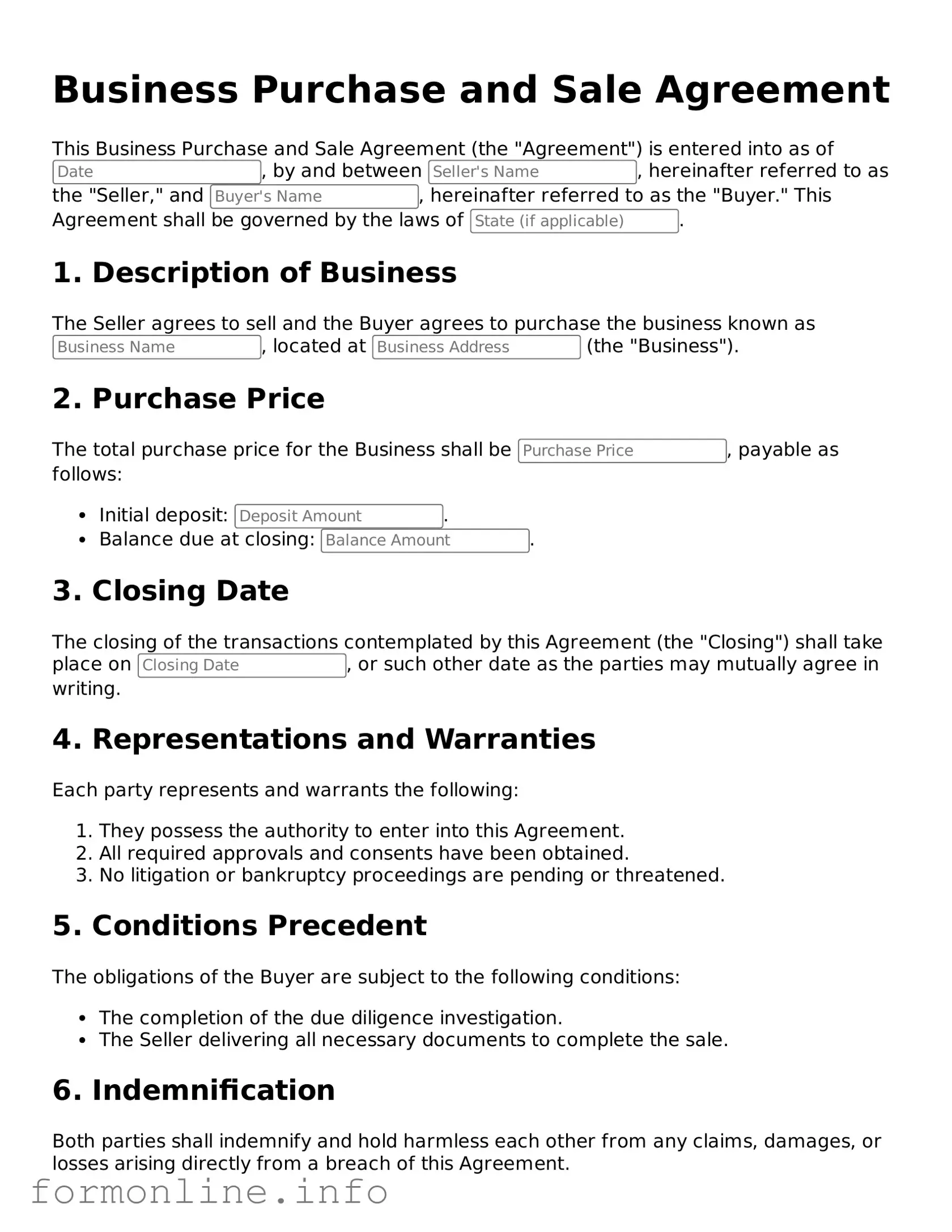The Letter of Intent (LOI) is a preliminary document that outlines the basic terms of a business deal before the final agreement is drafted. Similar to the Business Purchase and Sale Agreement, the LOI expresses the intention of both parties to proceed with the transaction. It typically includes key details such as the purchase price, payment terms, and a timeline for closing the deal. However, unlike the final agreement, the LOI is usually non-binding, allowing both parties to negotiate further without legal obligations.
The Asset Purchase Agreement (APA) focuses specifically on the purchase of individual assets of a business rather than the entire business entity. Like the Business Purchase and Sale Agreement, the APA details the terms of the transaction, including the assets being sold and their valuation. Both documents serve to protect the interests of the buyer and seller, ensuring that all necessary information is disclosed and agreed upon before the sale is finalized.
The Stock Purchase Agreement (SPA) is another document similar to the Business Purchase and Sale Agreement, but it specifically pertains to the purchase of stock in a corporation. This agreement outlines the terms under which the buyer acquires shares from the seller. Like the Business Purchase and Sale Agreement, it includes provisions for price, payment methods, and representations and warranties, but it focuses on ownership transfer rather than the business's operational assets.
The Confidentiality Agreement, also known as a Non-Disclosure Agreement (NDA), is crucial during the negotiation phase of a business sale. This document ensures that sensitive information shared between the buyer and seller remains confidential. While the Business Purchase and Sale Agreement finalizes the transaction, the Confidentiality Agreement protects both parties' interests during discussions and due diligence, ensuring that proprietary information is not disclosed to outside parties.
The Due Diligence Checklist is an essential tool used during the evaluation of a business before purchase. It outlines all the necessary information and documentation that the buyer should review to assess the business's value and risks. Similar to the Business Purchase and Sale Agreement, it aims to ensure that both parties are fully informed before finalizing the sale. The checklist helps identify any potential issues that could affect the transaction, allowing for informed decision-making.
The Purchase Order (PO) is a document used in the sale of goods and services, but it shares similarities with the Business Purchase and Sale Agreement in that it formalizes a buyer's intent to purchase. Both documents outline the specifics of the transaction, including quantities, prices, and delivery terms. While a PO is typically used for smaller transactions, it serves a similar purpose in establishing the terms of the sale and protecting both parties' interests.
The Bill of Sale is a document that serves as proof of the transfer of ownership of goods or assets. In the context of a business sale, it provides evidence that the buyer has acquired specific assets from the seller. Similar to the Business Purchase and Sale Agreement, the Bill of Sale outlines the details of the transaction, including what is being sold and for how much. It acts as a legal record of the sale, ensuring clarity and reducing potential disputes in the future.
For those interested in the preliminary documents for investment, understanding the significance of an "Investment Letter of Intent" can be invaluable for outlining intentions before formal agreements are made. This letter not only sets the stage for future negotiations but also clarifies essential terms that will govern the investment relationship, making it a cornerstone document for investors. For more information, visit our guide on key elements of the Investment Letter of Intent.
The Partnership Agreement is relevant when a business is being sold to a new partner or when existing partners are buying out one another. This agreement outlines the terms of the partnership, including each partner's contributions, profit-sharing, and responsibilities. Like the Business Purchase and Sale Agreement, it is designed to protect the interests of all parties involved, ensuring that everyone is on the same page regarding the terms of the partnership and the sale.
